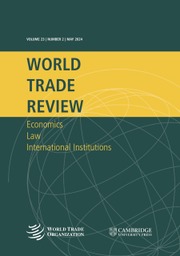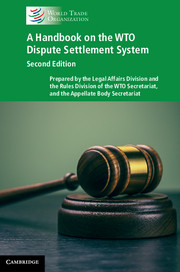This page lists international non-governmental organizations that provide consistent and stable administrative structures and rules for arbitration and gives links to them.
The PCA was established by the Convention for the Pacific Settlement of International Disputes in 1899. It's purpose is to facilitate arbitration and other forms of dispute resolution between states. It has a three-part organizational structure consisting of: (1) an Administrative Council that oversees its policies and budgets; (2) a panel of independent potential arbitrators known as the Members of the Court; and (3) a Secretariat, known as the International Bureau, headed by the Secretary-General. In addition to arbitration, the PCA also supports conciliation and fact-finding. It accepts claims from states, private parties, state entities, and intergovernmental organizations. Under the UNCITRAL Arbitration Rules the PCA’s Secretary-General designates the appointing authority when a party for arbitration requests it. The PCA has recently expanded its ability to arbitrate environmental cases. It has adopted two new sets of rules on environmental arbitration and conciliation and has created an environmental section that has a list of arbitrators with a specialization in international environmental law and a list of environmental scientists who can act as expert witnesses.
This organization was created in 1966 under the International Convention for the Settlement of Investment Disputes (ICSID Convention). It is affiliated with the International Bank for Reconstruction and Development (IBRD), which is a major division of the World Bank Group. Like the PCA above, it is also a “permanent framework for arbitral tribunals.” It has an Administrative Council that governs the organization and is made up of one representative of each party to the ICSID Convention. The President of the World Bank is the ex officio Chair of the Council. The Centre also has a Secretariat to manage its continuing affairs. The Centre also has Panels of Arbitrators and Conciliators. The arbitration and conciliation is not carried out by the Centre itself; the arbitral tribunals and conciliation commissions are ad hoc. Parties must be a state that is a party to the ICSID Convention and an investor whose country is also a party to the Convention. Although awards are only published with the consent of both parties, the Secretary-General must “publish information about the existence and progress of pending cases....Since 2006 the Centre is under an obligation to publish excerpts of the legal reasoning of each award.” (Christoph Schreuer, International Centre for Settlement of Investment Disputes, in Max Plank Encyclopedia of Public International Law (2010), at ¶51)
The WTO was created in 1995 to provide a forum for the negotiation of agreements to regulate trade, to resolve disputes among members, and to impose sanctions. Its highest authority is the Ministerial Conference, which must meet at least once every two years. The Ministerial Conference can make decisions on any topic that the WTO may address. Below it is the General Council, which “acts on behalf of the Ministerial Conference on all WTO affairs.” It meets as itself, as the Dispute Settlement Body, and as the Trade Policy Review Body “to oversee procedures for settling disputes between members and to analyse members’ trade policies.”
To locate WTO documents at UC do an author search in OneSearch on World Trade Organization. Although we have only a handful of them, they are well selected.
 World Trade Review
World Trade Review
 A Handbook on the WTO Dispute Settlement System
A Handbook on the WTO Dispute Settlement System
 Handbook of WTO/GATT Dispute Settlement
by
Pierre Pescatore; William J. Davey; Andreas F. Lowenfeld
Handbook of WTO/GATT Dispute Settlement
by
Pierre Pescatore; William J. Davey; Andreas F. Lowenfeld
University of Cincinnati Libraries
PO Box 210033 Cincinnati, Ohio 45221-0033
Phone: 513-556-1424
University of Cincinnati
Alerts | Clery and HEOA Notice | Notice of Non-Discrimination | eAccessibility Concern | Privacy Statement | Copyright Information
© 2025 University of Cincinnati
